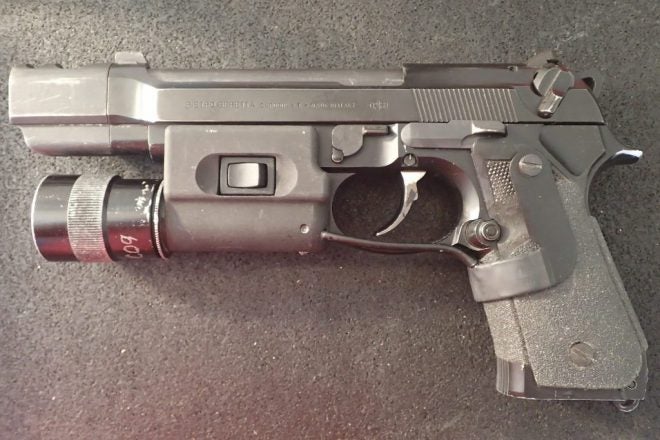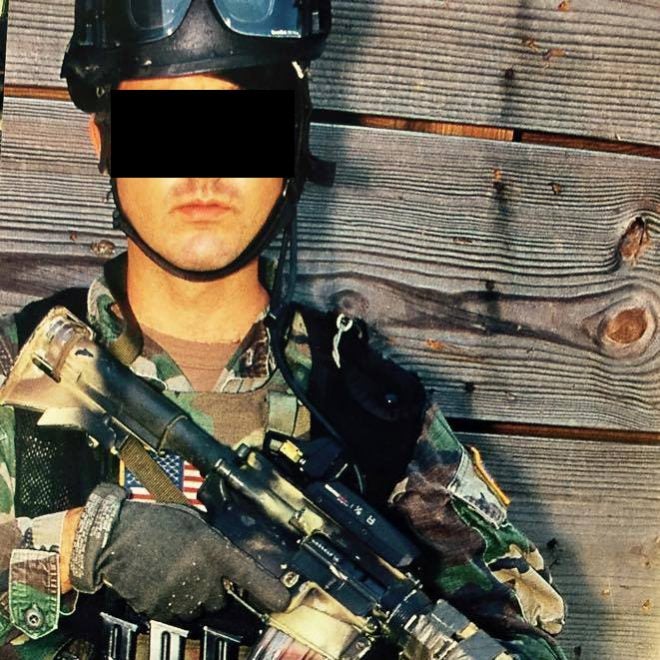Recently I was poking around a favorite group of mine on Facebook (Primary & Secondary) and came across a highly modified 92 series gun that really caught my attention. I reached out to the owner Kurt and asked if we could run a story on it and if he had more information he would be willing to share. Thankfully he obliged with a wonderful write-up, parts lists, and even photos of the pistol broken down so we can get a clearer picture of what he has massaged and tweaked.
Kurt said in his initial post:
This an older Italian made Beretta, the parts from my unit gun were swapped into it sometime in the mid-90’s.
Originally it was just an add-on compensator, Haarts recoil reducing guide rod (mercury filled), a + power recoil spring, and the first generation Surefire WML.
As it is now it using a Jarvis barrel and compensator, skeletonized hammer, Trijicon front sight milled into the slide, unknown aftermarket rear sight, and an incredible trigger job done by me.
DA is very smooth and clean at 7.5 pounds, SA is crisp at 3.20 pounds. This is as light as I can make a Beretta trigger go and be reliable, and this one is absolutely reliable.
It shoots very fast, and very flat; I just wish I had cut the dovetail into the compensator instead of the slide.
The gun looks like something out of a sci-fi flick with the light removed and that big ol’ Jarvis two-port compensator (that appears to no longer be in production) hanging off the front of the gun. The other mods like the modified grips, trigger, hammer, and dovetail front sight stand out as well. Not pictured is the mini red dot sight that Kurt fitted to the gun at some point in his ownership of it.
Looking for a parts list? Here you go!
Slide parts:
– The front sight was ground off and a dovetail cut by myself and a very good friend, Tung
Nguyen (RIP), in 1996. It has a Trijicon Tritium-insert dove-tail front sight from a 1911, but
various other front sights were tried.
– Unknown rear sight that I really don’t like and am too lazy to change.
– Haarts mercury filled recoil reducing guide rod.
– 15-pound Beretta recoil spring (factory is a 13-pound)
– Jarvis barrel and dual port compensator. Various other barrels and compensators were tried,
this is by far the best of the bunch.
Frame Parts:
– The grips are thinned out as much as is possible, the only thing holding them together is the
skateboard tape. The bottom is cut back so I could disassemble the pistol without taking them
off.
– The trigger bar has been heavily polished, as has almost every part that moves; even the inside
of holes are polished.
– The trigger is an older Short –Reset trigger from Ernst Langdon, the trigger spring is from Wolff.
– The sear spring has been re-contoured and the pin and sear polished. The edge of the sear of
has been polished as well.
– The hammer spring guide has been heavily polished everywhere it touches something else, the
hammer spring is an 18-pound 1911 main spring. A lot of people experimented with cutting
coils off of the issued spring, but I never liked that practice as it made the pistols unreliable as
well as not providing a smooth trigger pull.
– I experimented with a lot of springs of various weights and settled on this as easily reproducible
and extremely reliable. This was a duty weapon, so when testing was over I had to count on it
working the first time, every time.
– The hammer is skeletonized hammer from Ernst Langdon, the hammer pin as well as the inside
of the hole it goes into have been polished.
– The back end of the beaver tail has been reduced and polished, and the mag well has been
beveled.
Kurt reports that he has shot this pistol a lot. He made a conservitive estamate of over 70,000 rounds put downrange even thought the pistol looks like it wwasn’tshot much. That really is a testament to the 92 platform when the user takes care of their equipment. 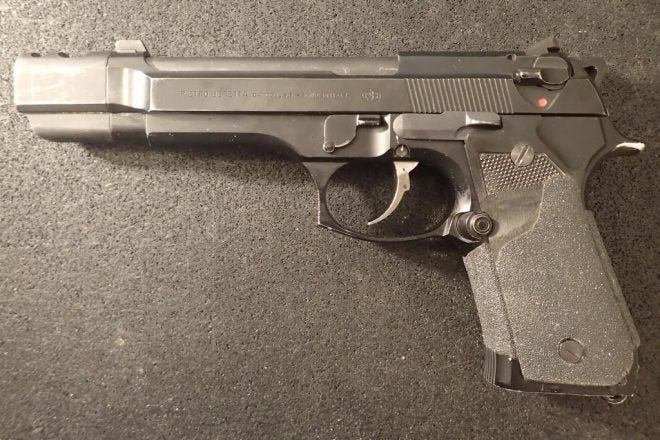
You can see exactly how much he shaved the grips down to thin them out and provide a flat surface for the skateboard tape to stick to. 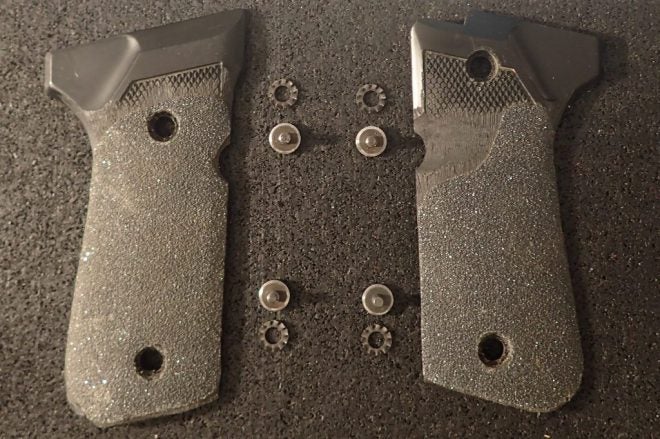
You can see the mercury filled guide rod to the left of the photo here as well as a layout of the smaller parts of the gun. 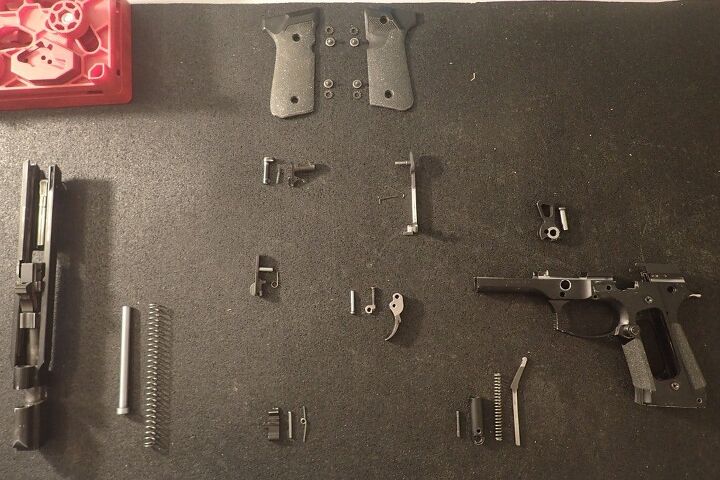
Kurt said that just about anything inside the gun that contacts anything else has been polished, even the inside of the holes. The result is a super smooth action and a 7.5 pound DA pull with a 3.2 pound single action pull. Kurt used an 18 pound 1911 main spring instead of cutting coils off of the original spring to maintain reliability.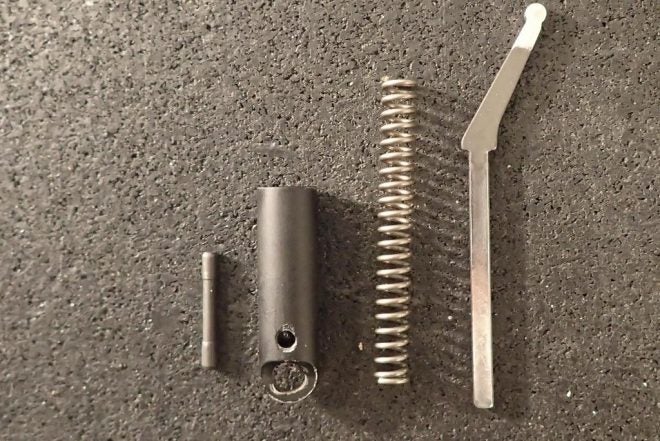
The sear has been smoothed and polished as well as the pin it rides on to give Kurt the nest possible feel on the trigger.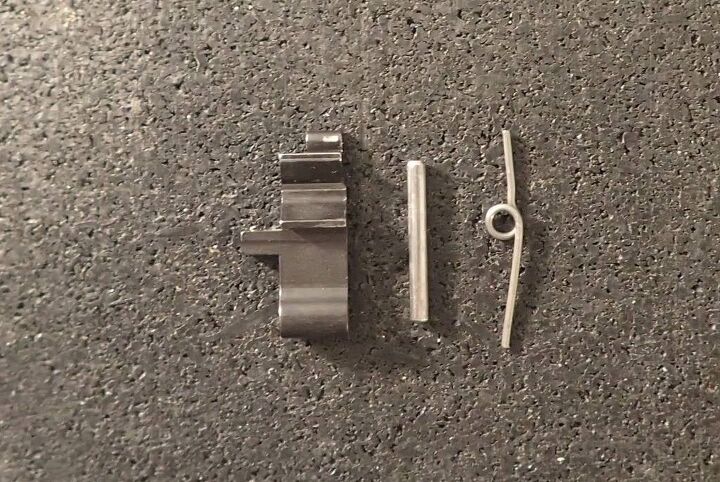
He fitted a short reset trigger from Ernest Langdon and used a Wolff trigger spring. 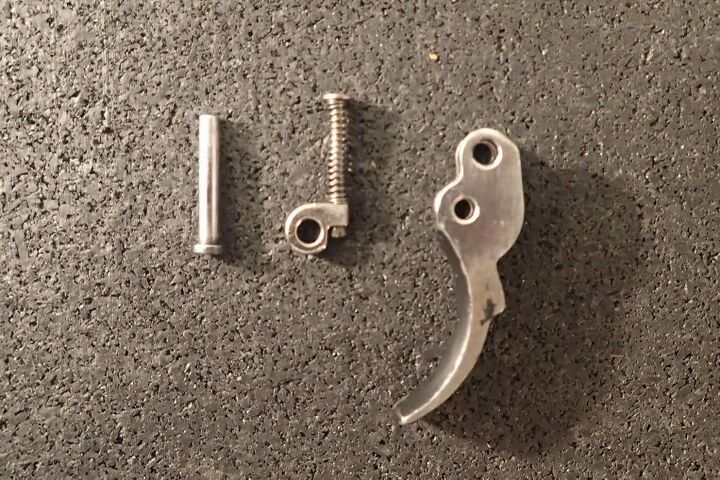
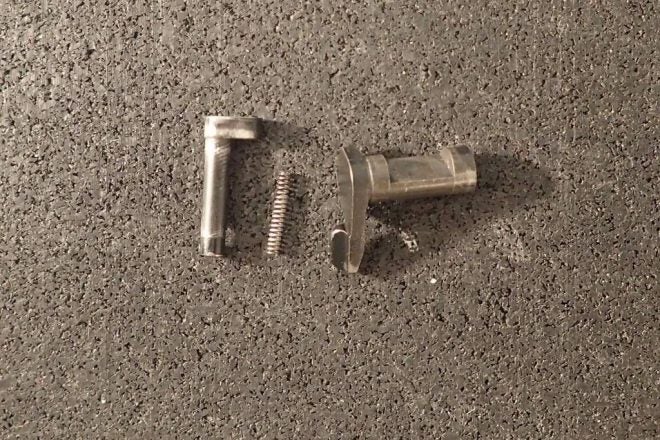
The hammer is another Ernest Langdon part that as best as I can tell is no longer produced. Since Ernest is now the Technical Advisor for Wilson Combat’s line of Beretta Parts you could probably pick up one of their hammers and get similar results. 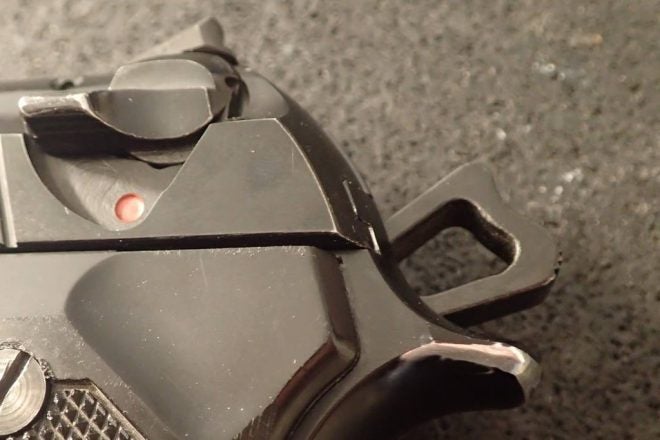
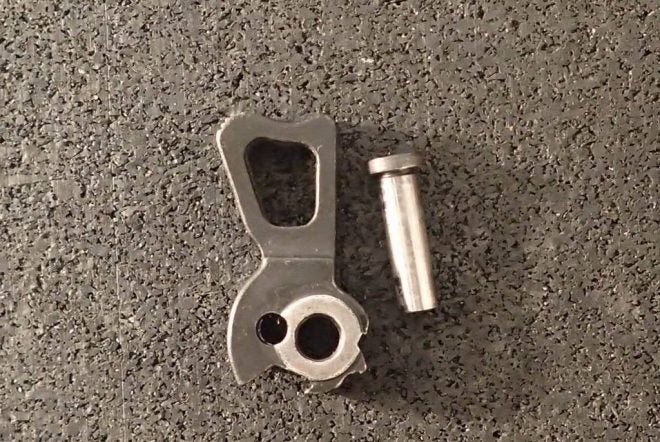
The front sight was ground off and a dovetail was cut in its place by his good friend Tung Nguyen who has since passed away (RIP) and a Trijicon Tritium insert was fitted to a 1911 front sight. 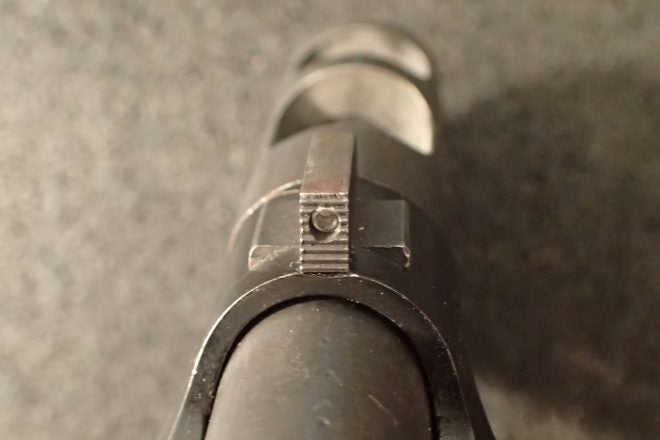
The inside of the slide looks well worn and the mercury filled guide rod from Haarts is above in the below photo. Kurt used a 15 pound recoil spring here vs. the factory 13 pound one. 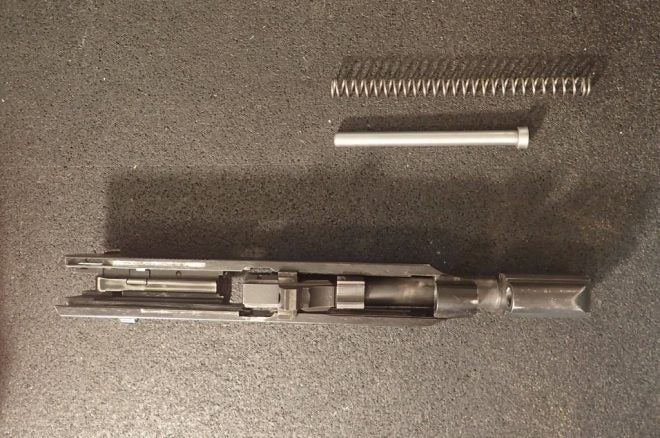
Kurt even polished the heck out of the trigger bar to again give him the best possible trigger pull.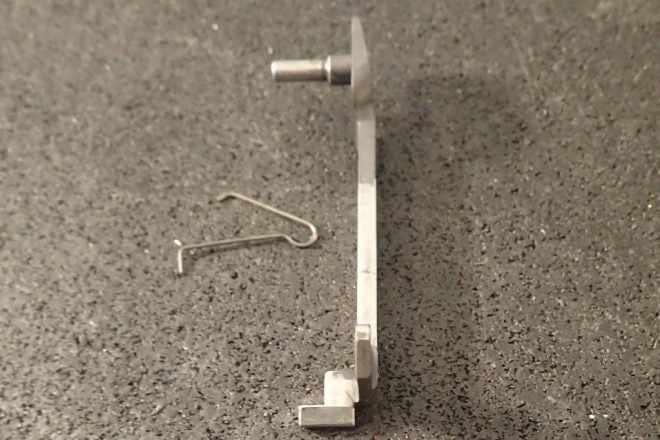
So who would use such a pistol? Kurt spent some time in places that were a bit past a rough neighborhood. He sent over this photo to share with all of you in his kit from back in the day.
Below is the write-up that Kurt sent over to explain all of the mods and what was done. It is a rather interesting read that I recommend taking some time to look at. You can clearly see that Kurt really likes the 92 platform and spent a ton of time testing different parts and finding what worked best for a duty gun application that had to work correctly every single time.
This pistol served as both a duty weapon, as well as test bed for parts, sights, accuracy and ease of use modifications. It’s different now than when it was first configured, but most of the changes reflect an update to something already in place.
Pistol marksmanship was a serious issue at my unit, and lots of people had problems when we transitioned to M9s from our 1911s. I had already been sent to a gunsmithing school in order to work on our 1911s, so when we got the M9s I was asked to find ways to make them better.
The idea for the modifications came from a trip I did where I and my unit worked with members of B Squadron, 1st SFOD-D for several months. During the trip I was given a modified 1911 pistol to shoot that included a Wilson Dual Port Compensator, S&A Magwell, Bomar rear sights and a post front sight dovetailed into the compensator.
That pistol shot amazing well, and when I returned to my unit decided I wanted something similar. I shot this slide (and sometimes pistol) continuously from around 1992 until 2005.
Important Legal disclaimer: I never swapped the slide onto an Army issue frame and shot that as I’m sure that would have violated a very important regulation.
Other than replace the recoil spring every month and keep it cleaned and very well lubricated (I was in Asia and everything rusts there, even the plastic) that was about all I to keep it working. As new parts were available I would order them, swap them in and then test them. If they worked and were reliable they were incorporated, if not they were binned.
Various models of Surefire weapons mounted lights were used. As fast as a new light was produced we were using them. I also shot this a lot without the light, in USPSA competition and at work for flat range training and instruction.
The gun shoots very well, is extremely fast and flat during rapid fire. All in all I think it is about as good as you can make a 92 series pistol for serious duty work. The only thing I wish I had changed is I wish we had cut the dovetail in the compensator rather than the slide. At the time, I wanted to be able to remove the compensator and shoot the pistol without it, but I think overall it would have been much better do it the other way.
This pistol has a LOT of rounds through it. A conservative estimate would be around 70,000 but it is probably much more. Breakage was very minimal, I expect due to the Haarts recoil reducer and religiously changing out the recoil spring every month. I broke one locking block almost as soon as the pistol was originally built, but it was old and from a rack gun I was using at the time.
 Your Privacy Choices
Your Privacy Choices
